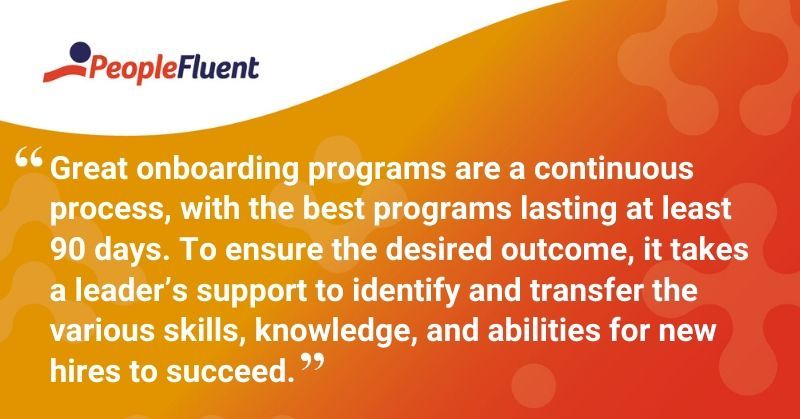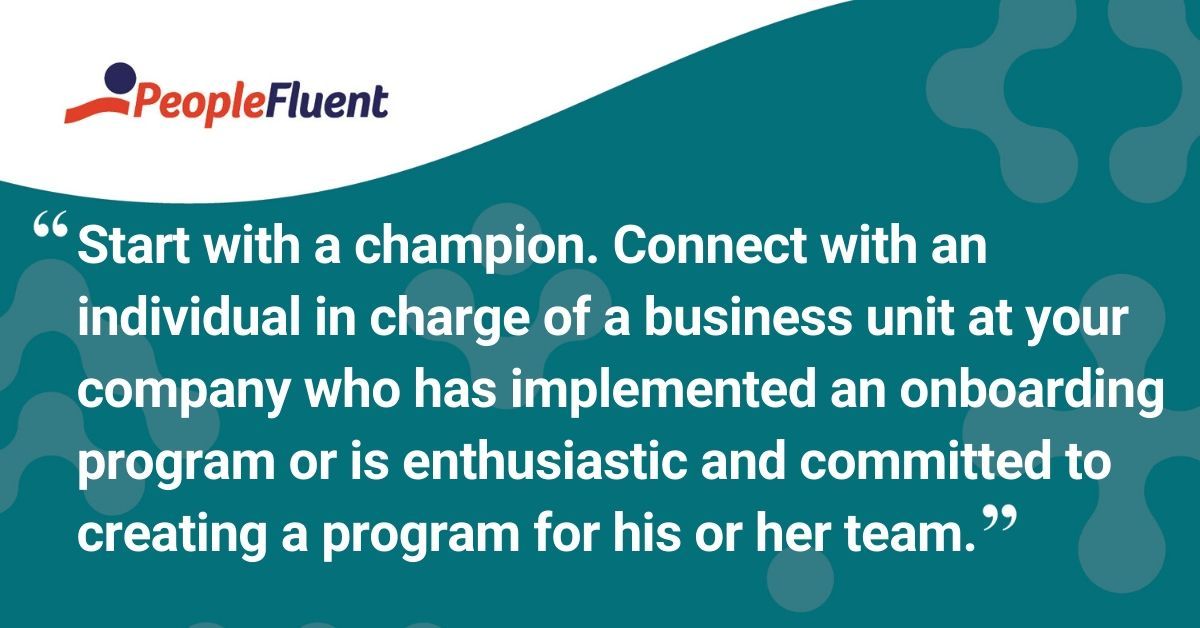Published: Jul 15, 2020Time to read: 5mins Category: Insights
Preparing Employees to Run on Your Fast Track: 10 Onboarding Best Practices
Table of Contents
A good onboarding program is key to retaining your staff. Get it right and you’ll have happy employees who stay with your company, providing value and expertise, for years to come. Get it wrong and they could be out the door in less than a year, leaving you to start recruiting from scratch. Find out how to elevate your employee onboarding experience with these 10 onboarding best practices.
Let’s say that after weeks of searching you find and successfully win the bid for the horse you believe could win the Kentucky Derby. You bring it home and put it in a beautiful stable, and nourish its growth with super-food grains and the best veterinary healthcare available. Then, you point it toward a pasture and tell the horse to “run!”. Is that a horse that’s going to win at Churchill Downs?
This is the story of too many employees’ first days on the job. Entering a new role, at a new company, and hearing all the great things they could accomplish in said role. They’re provided a compensation and benefits package, set up with learning initiatives, and then left to their own devices. Does this make for a potential top performer who will inevitably add value from day one? Or is your organization at risk of creating a poor employee experience from the beginning?

Keep reading: 'Onboarding Checklists: 6 Benefits for Talent Acquisition Leaders'
How to Prepare New Employees for Success
Great onboarding programs are a continuous process, with the best programs lasting at least 90 days. To ensure the desired outcome—an employee who is aware of how to contribute to your corporate culture—it takes a leader’s support to identify and transfer the various skills, knowledge, and abilities for new hires to succeed.
At Peoplefluent, our HR department constructed an onboarding program founded on 10 important implementation steps:
1. Research onboarding best practices: Ask and share information about onboarding programs with other employers and use their experiences as a platform to inspire your own ideas.
2. Focus on creating one great pilot onboarding experience: Apply what you learned to one segment of your company and fully commit to execution. Quality over quantity is most important to prove the validity of the concept.
3. Start with a champion: Connect with an individual in charge of a business unit at your company who has implemented an onboarding program or is enthusiastic and committed to creating a program for his or her team.
4. Work with professionals who make others believers: Ideally, the person described in step 3 can serve in this capacity. After their successful onboarding experiences, encourage them to tell others about the impact the program had on their part of the business. It’s about creating internal advocates who believe in the company and its culture from day one.
5. Move quickly after the first success, letting it snowball: Once you’ve seen a new employee’s initial success, move quickly to take advantage of what other business leaders appreciate about the program’s value. Use that recognition to gather resources and greater buy-in.
6. Partner with other departments, enabling the business to own its content: Just as a franchise needs individual franchise owners to run its stores, in order for the onboarding program to expand, the business unit leaders need to take ownership of their teams’ program.
7. Use onboarding efforts to introduce a social and/or learning platform: Multiply everyone’s hard work by making use of technology such as a learning experience platform to share material in a centralized platform. Information sharing that begins in onboarding—along with the connections people make during onboarding—can be extended for ongoing information sharing and social collaboration.
8. Create a feedback loop: Use surveys and speak with both the new hires and their managers to find out how to improve the program further. Feedback should be continuous through the use of pulse surveys and employee/manager one-to-one conversations. Further, encourage your senior employees to be part of the onboarding process.
9. Measure your results: Compile results from the surveys and other statistics to discover objective results. These metrics can be used to drive more L&D efforts or to establish future performance goals.
10. Replicate the successes: Onboarding is one process that is neither cyclical nor ever really complete. Once you get started, don’t stop. It’s important to keep evolving and refining the program for new classes of professionals who join your team.

Recommended for you: 'How COVID-19 Has and Will Change Recruiting Strategies'
Take the Next Steps Toward Successful Onboarding
For employees to be successful in their run on your organization’s fast track, a robust onboarding program is essential. According to a survey from Gallup, only 12% of employees believe their organization provides a great onboarding experience—an important part of retention.
To ensure you provide that great experience to all of your organization’s new employees, keep our checklist handy and remember to make it unique but consistent. That’s to say, each employee will have specific needs throughout their onboarding journey with your company. Having data-driven and measurable elements while also creating a tailored approach for every employee will elicit the best results.
More from the blog: ‘9 Steps to a Better Onboarding Program’
Editor’s Note: This blog was originally published in June 2012 and has been updated with current information and insights.
Master Your Onboarding Program With Comprehensive Software
PeopleFluent software helps you tailor the onboarding process to meet the needs of your most valuable assets, your people.